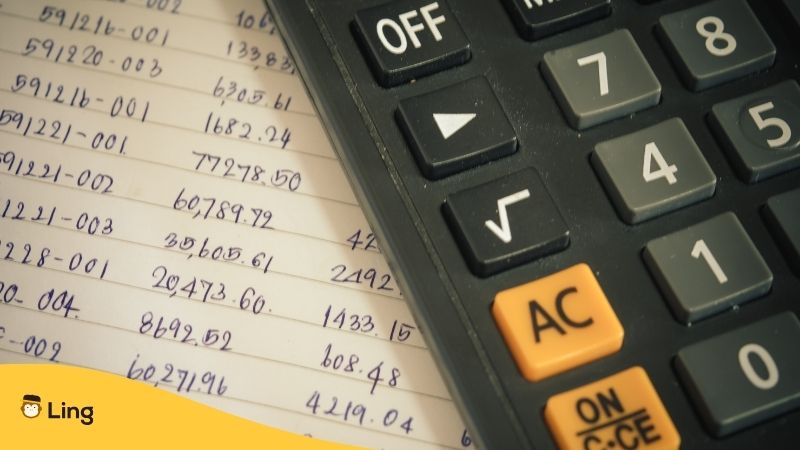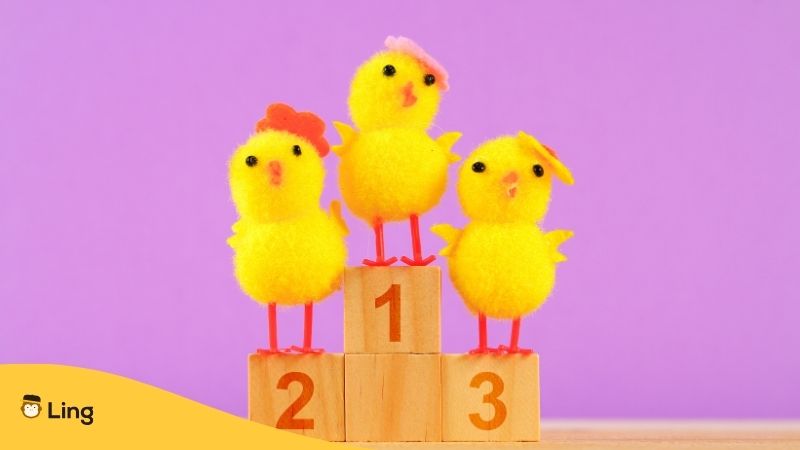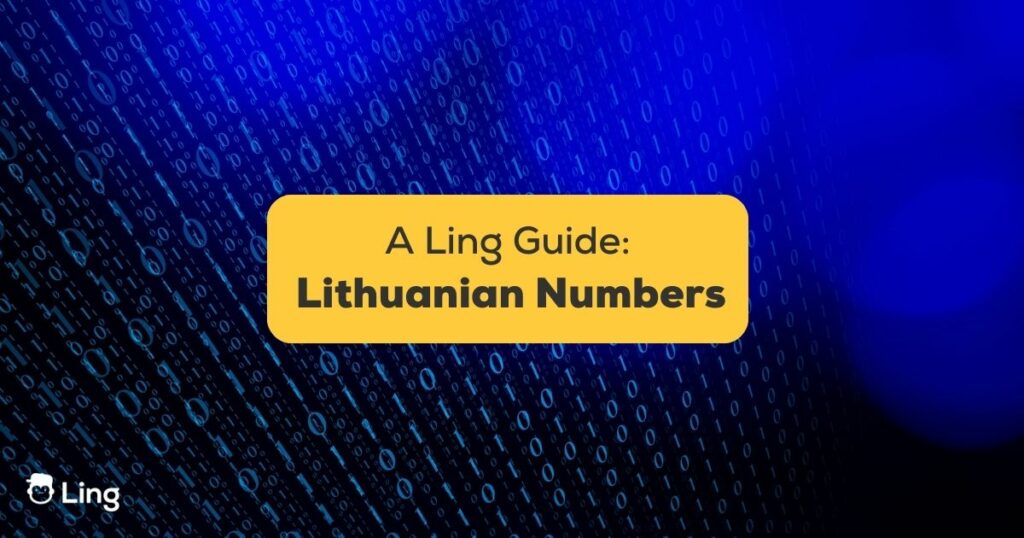Planning a trip to Lithuania soon? Awesome! You’re going to have an amazing time. But before you go, we need to get you prepped with some key words related to Lithuanian numbers. Trust me, it will make a world of difference when you can speak a little of the local language!
Don’t believe me? Just think of these instances: When the bus driver asks for payment, you’ll be able to understand the amount owed and count out the correct euros and cents. Or, when purchasing souvenirs at a local market, you can tally up the items you’re buying, negotiate on the price, and count your change afterward.
See? Lithuanian numbers already coming in handy! By learning just the basics of counting, you equip yourself with knowledge that facilitates practical daily interactions. This goes a long way in making you feel more welcomed and integrated as you explore the Lithuanian language more.
Table Of Contents
Lithuanian Numbers
When learning a new language, what topic do you usually search for? Numbers seem easier to memorize than words and phrases in Croatian. If you’re serious about leveling up your skills in Lithuanian, one important area to get familiar with is Lithuanian numbers or skaičių.
In this section, we’ll cover two key types of numbers: cardinal and ordinal. Cardinal numbers are your basics – counting objects like one, two, three, and so on. These will allow you to do simple tasks like ordering food and paying bills. Ordinal numbers build on that foundation by answering “which one” for sequencing – first, second, third, and such.
Locking these types of numbers down will certainly help you with transit schedules, reserving hotel rooms, reading dates, and more during your travels. Let’s begin!

Cardinal Numbers In Lithuanian
The good news is cardinal numbers (Skaitvardžiai) in Lithuanian are pretty similar to English! You just have to memorize 1-10, then you can add suffixes for higher numbers. However, there is one key difference – Lithuanian cardinal numbers have grammatical gender.
From 0-9, digits pair with either masculine or feminine nouns. For example, one is ‘vienas’ for masculine nouns and ‘viena’ for feminine. It may seem tricky, but for numbers 0-3, there’s an easy feminine suffix to remember: -ios. After 10, there’s only one gender form. Let’s break it all down in the table below.
| Number | Masculine Form | Feminine Form |
|---|---|---|
| 0 | nulis | nulis |
| 1 | vienas | viena |
| 2 | du | dvi |
| 3 | trys | trys |
| 4 | keturi | keturios |
| 5 | penki | penkios |
| 6 | šeši | šešios |
| 7 | septyni | septynios |
| 8 | aštuoni | aštuonios |
| 9 | devyni | devynios |
Pretty easy, eh? It will even be more practical for you to memorize Croatian numbers by using them in conversational sentences. With the Ling app, you can even hear what these words sound like. Do we have your attention? If yes, then visit the Play Store or App Store for more fun-filled topics and even cultural notes about the Croatian language.
Let’s now break down two easy patterns for more numbers in Lithuanian.
First, for numbers 11-19, we take the 1-9 digits and add on the same ending: “-lika“.
- 11 is “vienuolika”
- 12 is “dvylika”
- 15 is “penkiolika”
Second, multiples of 10 (10, 20, 30 etc.) end in “-dešimt” (except for 10 itself).
- 20 is “dvidešimt”
- 30 is “trisdešimt
- 40 is “keturiasdešimt”
Here are more examples:
| Number | Lithuanian Numbers |
|---|---|
| 20 | dvidešimt |
| 30 | trisdešimt |
| 40 | keturiasdešimt |
| 50 | penkiasdešimt |
| 60 | šešiasdešimt |
| 70 | septyniasdešimt |
| 80 | aštuoniasdešimt |
| 90 | devyniasdešimt |
As you can see in the table, the tens (20 through 90) are straightforward and do not differentiate between genders, making them simpler in this aspect compared to the singular numbers.
Ready for higher numbers? The pattern is still pretty simple! For hundreds, we add the word “šimtas” (or “šimtai” for plural). For example:
- 100 is “šimtas”
- 200 is “du šimtai”
- 300 is “trys šimtai”
It works the same way for thousands using the word “tūkstantis” (or plural “tūkstančiai”). Such as:
- 1,000 is “tūkstantis”
- 2,000 is “du tūkstančiai”
- 3,000 is “trys tūkstančiai”
Again, only 1,000 takes the singular form. All other thousands use the plural tūkstančiai plus the base number.

Ordinal Numbers In Lithuanian
While cardinal numbers are for counting, ordinal numbers (Kelintiniai skaitvardžiai) answer the question of “which one” in order. Words like first, second, third, and so on. Knowing some ordinals will help you with practical matters on your Lithuanian adventures, things like taking the fourth bus to your hotel, reserving the ninth room in line, or knowing you’re attending the fifty-first Lithuanian Song Festival!
The nice thing is forming ordinal numbers in Lithuanian follows an easy pattern. We take a cardinal number, like one, two, or ten, and simply add on the ending “-as.”
| Number | Lithuanian Numbers |
|---|---|
| 1 | pirmas |
| 2 | antras |
| 3 | trečias |
| 4 | ketvirtas |
| 5 | penktas |
| 6 | šeštas |
| 7 | septintas |
| 8 | aštuntas |
| 9 | devintas |
| 10 | dešimtas |
Once you understand Lithuanian numbers, especially ordinal numbers, you can also easily learn the seven days of the week in the Lithuanian calendar. It is quite easy as you can just add the word ‘day’ after the number.
| English | Lithuanian |
|---|---|
| Monday | pirmadienis (1st day) |
| Tuesday | antradienis (2nd day) |
| Wednesday | trečiadienis (3rd day) |
| Thursday | ketvirtadienis (4th day) |
| Friday | penktadienis (5th day) |
| Saturday | šeštadienis (6th day) |
| Sunday | sekmadienis (7th day) |
How To Effectively Learn Lithuanian Numbers
Okay, we’ve covered the basics – now let’s get you truly learning and mastering Lithuanian numbers! I’ll share 3 simple yet effective tips to move these from your short-term to your long-term memory.
Quiz Yourself With Flashcards
Physical cards are great, but apps work too! The key is actively recalling the numbers, not just passively reading them. Try to visualize the numbers and meanings as well.
Speak The Numbers Out Loud
Getting the pronunciation embeds it deeper in your brain through audio pathways. You’ll get familiar with the sounds and flow. Don’t be shy – mutter numbers as you walk, cook dinner, brush your teeth.
Use The Numbers
Look for chances in daily life to switch your counting to Lithuanian. Count stacks of coins, books on a shelf, or anything around you. Also, substitute Lithuanian digits and operations when you calculate tips or totals in your head.
That’s it! Just a few minutes each day spent quizzing, speaking aloud, and using numbers will solidify your knowledge. In no time, you’ll be effortlessly counting, doing math, and handling numerical questions as you enjoy your Lithuanian adventures!
Ready To Move Beyond Counting?
Of course, there’s always more to discover about this logical yet intricate language. As you continue exploring Lithuania’s culture and landscapes, you’ll want to expand your vocabulary in many areas.
For building on numbers or learning every day Lithuanian phrases, I highly recommend the Ling app. Ling has bite-sized lessons and quizzes so you can master pronunciation at your own pace. The lessons are crafted by real Lithuanian teachers focusing on practical conversations. Give it a try now!



































































